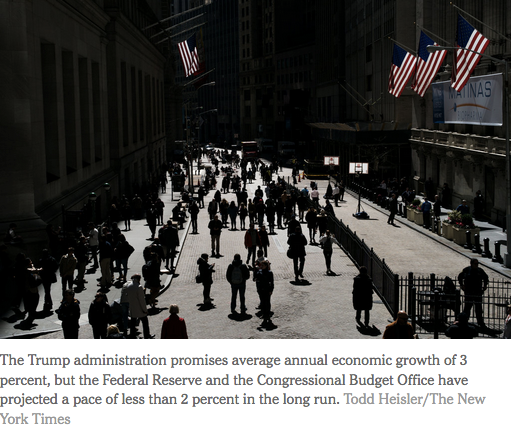Cutting the tax on investment income, for example, delivers the most bang for the buck, Mr. Viard said, but unless the lost revenue is made up through increases in other taxes or spending cuts, the deficit will balloon and economic growth will suffer.
Previous presidents have not had a lot of success using tax cuts to spur growth. “The historical record is pretty clear that large tax cuts don’t pay for themselves through economic growth,” said Michael J. Graetz, a professor of tax law at Columbia University.
The 1981 tax cut that President Ronald Reagan pushed through did provide a short jolt to the economy, Mr. Graetz said, but he pointed out that the administration was compelled to raise taxes in 1982 and 1984 to keep the deficit under control.
Tax cuts championed by President George W. Bush in 2001 and 2003 performed even worse. While the cuts temporarily stimulated spending by putting more money in people’s pockets, they did not have much impact in enhancing the economy’s ability to produce goods and services.
Both President Trump and the House Republicans’ proposals reserve the biggest tax cuts for the wealthiest. Slashing rates at the top is probably the least effective way of spurring spending, however, because high-income households have the luxury of socking away a financial windfall, said Nariman Behravesh, chief economist at the research firm IHS Markit. The Trump plan, he said, “could well end up hurting a lot of poor people without boosting growth.”
. . .
“With the economy back to near full employment, conventional tax cuts or stimulus spending won’t have that much of an effect,” said Douglas Holtz-Eakin, a conservative economist who served in the George W. Bush administration and advised John McCain’s 2008 presidential campaign. “What is needed are policies that genuinely augment the supply side of the economy.”
What might that look like? Instead of simply cutting rates, Mr. Holtz-Eakin would opt for incentives for business to invest in new equipment or software, infrastructure investments that speed transportation and ease other frictional costs, and retraining that improves workers’ skills and increases the proportion of prime-age Americans who are employed.




